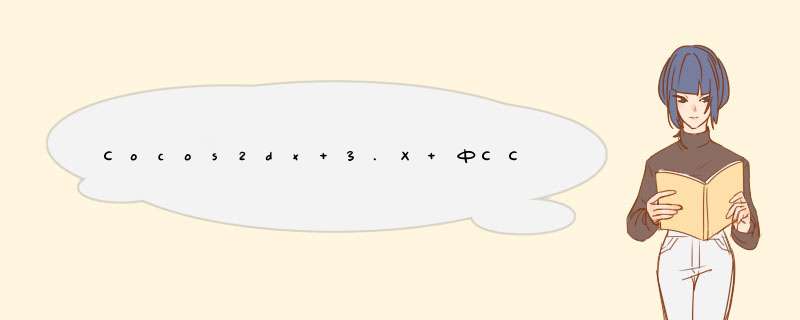
c++ 11基础 :
std::function
类模版std::function是一种通用、多态的函数封装。std::function的实例可以对任何可以调用的目标进行存储、复制、和调用 *** 作,这些目标包括函数、lambda表达式、绑定表达式、以及其它函数对象等。
用法示例:
①保存自由函数
?| 1 2 3 4 5 6 7 8 | voID printA( int a) { cout<<a<<endl; } std::function< ( a)>func; func=printA; func(2); |
运行输出: 2
②保存lambda表达式
2()>func_1=[](){cout<< "helloworld" <<endl;}; func_1(); 运行输出:hello world
③保存成员函数
8 9 10Foo{ Foo( num):num_(num){} print_add( i) const {cout<<num_+i<< '\n' ;} num_; }; //保存成员函数 ( Foo&, )>f_add_display=&Foo::print_add; Foofoo(2); f_add_display(foo,1); 运行输出: 3
bind bind是一组用于函数绑定的模板。在对某个函数进行绑定时,可以指定部分参数或全部参数,也可以不指定任何参数,还可以调整各个参数间的顺序。对于未指定的参 数,可以使用占位符_1、_2、_3来表示。_1表示绑定后的函数的第1个参数,_2表示绑定后的函数的第2个参数,其他依次类推。
下面通过程序例子了解一下用法:
? #include<iostream> using namespace std; class A { public : fun_3( k,monospace!important; border:0px!important; bottom:auto!important; float:none!important; height:auto!important; left:auto!important; line-height:1.1em!important; outline:0px!important; overflow:visible!important; position:static!important; right:auto!important; top:auto!important; vertical-align:baseline!important; wIDth:auto!important; Font-size:1em!important; min-height:inherit!important">m) { cout<<k<< "" <<m<<endl; } }; fun( x,monospace!important; border:0px!important; bottom:auto!important; float:none!important; height:auto!important; left:auto!important; line-height:1.1em!important; outline:0px!important; overflow:visible!important; position:static!important; right:auto!important; top:auto!important; vertical-align:baseline!important; wIDth:auto!important; Font-size:1em!important; min-height:inherit!important">y,monospace!important; border:0px!important; bottom:auto!important; float:none!important; height:auto!important; left:auto!important; line-height:1.1em!important; outline:0px!important; overflow:visible!important; position:static!important; right:auto!important; top:auto!important; vertical-align:baseline!important; wIDth:auto!important; Font-size:1em!important; min-height:inherit!important">z) { cout<<x<< <<y<< <<z<<endl; } fun_2( &a,monospace!important; border:0px!important; bottom:auto!important; float:none!important; height:auto!important; left:auto!important; line-height:1.1em!important; outline:0px!important; overflow:visible!important; position:static!important; right:auto!important; top:auto!important; vertical-align:baseline!important; wIDth:auto!important; Font-size:1em!important; min-height:inherit!important">&b) { a++; b++; cout<<a<< <<b<<endl; } main( argc, const char *argv[]) { auto f1=bind(fun,1,2,3); //表示绑定函数fun的第一,二,三个参数值为:123 f1(); //print:123 f2=bind(fun,placeholders::_1,placeholders::_2,3); //表示绑定函数fun的第三个参数为3,而fun的第一,二个参数分别有调用f2的第一,二个参数指定 f2(1,2); //print:123 f3=bind(fun,3); //表示绑定函数fun的第三个参数为3,而fun的第一,二个参数分别有调用f3的第二,一个参数指定 //注意:f2和f3的区别。 f3(1,0)!important; bottom:auto!important; float:none!important; height:auto!important; left:auto!important; line-height:1.1em!important; outline:0px!important; overflow:visible!important; position:static!important; right:auto!important; top:auto!important; vertical-align:baseline!important; wIDth:auto!important; Font-size:1em!important; min-height:inherit!important">//print:213 n=2; m=3; f4=bind(fun_2,n,placeholders::_1); f4(m); //print:34 cout<<m<<endl; //print:4说明:bind对于不事先绑定的参数,通过std::placeholders传递的参数是通过引用传递的 cout<<n<<endl; //print:2说明:bind对于预先绑定的函数参数是通过值传递的 Aa; f5=bind(&A::fun_3,a,placeholders::_2); f5(10,20); //print:1020 ,monospace!important; border:0px!important; bottom:auto!important; float:none!important; height:auto!important; left:auto!important; line-height:1.1em!important; outline:0px!important; overflow:visible!important; position:static!important; right:auto!important; top:auto!important; vertical-align:baseline!important; wIDth:auto!important; Font-size:1em!important; min-height:inherit!important">)>fc=std::bind(&A::fun_3,std::placeholders::_1,std::placeholders::_2); fc(10,0)!important; bottom:auto!important; float:none!important; height:auto!important; left:auto!important; line-height:1.1em!important; outline:0px!important; overflow:visible!important; position:static!important; right:auto!important; top:auto!important; vertical-align:baseline!important; wIDth:auto!important; Font-size:1em!important; min-height:inherit!important">//print:1020 return 0; } |
CC_CALLBACK
一、通过 HelloWorldScene 中的 closeItem 开始
在cocos2d-x 2.x 版本中:
5"Closenormal.png" "CloseSelected.png" this menu_selector(HelloWorld::menuCloseCallback)); 在cocos2d-x 3.0 版本中:
?closeItem=MenuItemImage::create( CC_CALLBACK_1(HelloWorld::menuCloseCallback,monospace!important; border:0px!important; bottom:auto!important; float:none!important; height:auto!important; left:auto!important; line-height:1.1em!important; outline:0px!important; overflow:visible!important; position:static!important; right:auto!important; top:auto!important; vertical-align:baseline!important; wIDth:auto!important; Font-size:1em!important; min-height:inherit!important">)); |
Director::getInstance()->end(); #if(CC_TARGET_PLATFORM==CC_PLATFORM_IOS) exit (0); #endif 注意到在3.0版本中使用到 CC_CALLBACK_1 这样一个宏定义。
? 5 //newcallbacksbasedonC++11 #defineCC_CALLBACK_0(__selector__,__target__,...)std::bind(&__selector__,##__VA_ARGS__) #defineCC_CALLBACK_1(__selector__,##__VA_ARGS__) #defineCC_CALCC_CALLBACK_1(HelloWorld::menuCloseCallback,this)LBACK_2(__selector__,std::placeholders::_2,##__VA_ARGS__) #defineCC_CALLBACK_3(__selector__,std::placeholders::_3##__VA_ARGS__)
这里主要注意两点:一是std::bind,二是##_VA_ARGS_; ##_VA_ARGS_是可变参数宏
原来还有 CC_CALLBACK_0 1 2 3;而其中又有什么区别呢?
1、首先我们看看3.0版本中MenuItemImage的create方法:
? 1 MenuItemImage*MenuItemImage::create( std::string&normalimage,monospace!important; border:0px!important; bottom:auto!important; float:none!important; height:auto!important; left:auto!important; line-height:1.1em!important; outline:0px!important; overflow:visible!important; position:static!important; right:auto!important; top:auto!important; vertical-align:baseline!important; wIDth:auto!important; Font-size:1em!important; min-height:inherit!important">std::string&selectedImage,monospace!important; border:0px!important; bottom:auto!important; float:none!important; height:auto!important; left:auto!important; line-height:1.1em!important; outline:0px!important; overflow:visible!important; position:static!important; right:auto!important; top:auto!important; vertical-align:baseline!important; wIDth:auto!important; Font-size:1em!important; min-height:inherit!important">ccmenuCallback&callback)
其中的回调参数是 ccmenuCallback
1 typedef (Object*)>ccmenuCallback 来这里使用到了 C++ 中的 function 语法。
注意到 在CC_CALLBACK_ 的宏定义的中使用到的是 C++ 的 bind 语法,怎么不一致了呢?-- 见下面第四点 function
2、看回CC_CALLBACK_ 的宏定义
原来CC_CALLBACK_ 的宏定义中后面的 0 1 2 3分别表示的是 不事先指定回调函数参数的个数。
例如说CC_CALLBACK_ 1 表示的是,回调函数中不事先指定参数是一个,而事先指定的回调函数的参数 可以任意多个。
而且要注意到其中 不指定回调函数参数 和 指定回调函数参数 的顺序,注意不事先指定的在前,事先指定的在后。
下面通过例子说明这一点:
假设回调函数:
//aselectorcallback menuCloseCallback(Object*pSender,monospace!important; border:0px!important; bottom:auto!important; float:none!important; height:auto!important; left:auto!important; line-height:1.1em!important; outline:0px!important; overflow:visible!important; position:static!important; right:auto!important; top:auto!important; vertical-align:baseline!important; wIDth:auto!important; Font-size:1em!important; min-height:inherit!important">a,monospace!important; border:0px!important; bottom:auto!important; float:none!important; height:auto!important; left:auto!important; line-height:1.1em!important; outline:0px!important; overflow:visible!important; position:static!important; right:auto!important; top:auto!important; vertical-align:baseline!important; wIDth:auto!important; Font-size:1em!important; min-height:inherit!important">b); 9 std::cout<<a<< <<b<<std::endl; Director::getInstance()->end(); #if(CC_TARGET_PLATFORM==CC_PLATFORM_IOS) (0); #endif 注意到在回调函数中输出 a b ? 4
注意中其中 指定了两个参数 1 2
运行,在 点击closeItem 的时候,就会输出这两个事先指定的参数 1 2。
那么,不事先指定的参数是在什么时候传入的呢?
? 17 MenuItem::activate() if (_enabled) { (_callback) { _callback( ); } (kScriptTypeNone!=_scriptType) { BasicScriptDatadata( ); ScriptEventscriptEvent(kMenuClickedEvent,&data); ScriptEngineManager::getInstance()->getScriptEngine()->sendEvent(&scriptEvent); } } 注意到其中的 _callback(this); 对了,这个时候就传入了 这个不事先指定的回调函数参数。 这样,closeItem 的回调函数的voID HelloWorld::menuCloseCallback(Object* pSender,int a,int b) 的三个参数都知道了。
第一个 不事先指定,在menu item调用 activate 的时候,_callback(this) 传入,this 也即是这个 menu item;第二、三个参数是事先指定的 1,2。
已经知道CC_CALLBACK_ 的宏定义是 std::bind 那么我们可以直接使用std::bind。
如下:
? 4 std::bind(&HelloWorld::menuCloseCallback,2));
总结 以上是内存溢出为你收集整理的Cocos2dx 3.X 中CC_CALLBACK_0 1 2 3理解全部内容,希望文章能够帮你解决Cocos2dx 3.X 中CC_CALLBACK_0 1 2 3理解所遇到的程序开发问题。
如果觉得内存溢出网站内容还不错,欢迎将内存溢出网站推荐给程序员好友。
欢迎分享,转载请注明来源:内存溢出
赞
(0)
打赏
 微信扫一扫
微信扫一扫
 支付宝扫一扫
quick-cocos2d-x游戏开发——StateMachine状态机
上一篇
2022-05-22
Cocos2d-x常用函数及常用宏
下一篇
2022-05-22
支付宝扫一扫
quick-cocos2d-x游戏开发——StateMachine状态机
上一篇
2022-05-22
Cocos2d-x常用函数及常用宏
下一篇
2022-05-22

评论列表(0条)